-
 Bitcoin
Bitcoin $118100
0.63% -
 Ethereum
Ethereum $3750
1.52% -
 XRP
XRP $3.182
1.83% -
 Tether USDt
Tether USDt $1.000
0.02% -
 BNB
BNB $785.5
0.94% -
 Solana
Solana $186.1
1.07% -
 USDC
USDC $0.0000
0.02% -
 Dogecoin
Dogecoin $0.2378
2.56% -
 TRON
TRON $0.3196
1.64% -
 Cardano
Cardano $0.8270
2.47% -
 Hyperliquid
Hyperliquid $43.88
1.78% -
 Sui
Sui $4.201
6.36% -
 Stellar
Stellar $0.4395
2.51% -
 Chainlink
Chainlink $18.49
2.52% -
 Hedera
Hedera $0.2872
11.32% -
 Bitcoin Cash
Bitcoin Cash $559.9
2.03% -
 Avalanche
Avalanche $25.22
6.06% -
 Litecoin
Litecoin $114.5
1.42% -
 Shiba Inu
Shiba Inu $0.00001409
2.03% -
 UNUS SED LEO
UNUS SED LEO $8.987
0.15% -
 Toncoin
Toncoin $3.320
5.03% -
 Ethena USDe
Ethena USDe $1.001
0.02% -
 Polkadot
Polkadot $4.180
2.96% -
 Uniswap
Uniswap $10.55
2.55% -
 Monero
Monero $321.1
0.14% -
 Dai
Dai $1.000
0.01% -
 Pepe
Pepe $0.00001266
2.40% -
 Bitget Token
Bitget Token $4.545
0.66% -
 Aave
Aave $296.6
1.63% -
 Cronos
Cronos $0.1374
6.34%
Is the top divergence signal of RSI effective? Is it time to reduce the position?
The RSI top divergence signal, where price hits a new high but RSI forms a lower high, may indicate a bearish reversal, prompting traders to reduce positions in cryptocurrencies.
Jun 10, 2025 at 07:15 pm

The Relative Strength Index (RSI) is a popular momentum oscillator used by traders to gauge the speed and change of price movements in the cryptocurrency market. One of the key signals that traders look for is the top divergence signal of RSI. This signal is believed to indicate a potential reversal in the price trend, prompting traders to consider reducing their positions. In this article, we will explore the effectiveness of the top divergence signal of RSI and discuss whether it is a reliable indicator for reducing positions in the cryptocurrency market.
Understanding RSI and Top Divergence
The RSI is calculated using the average gain and loss of a security over a specified period, typically 14 days. The index oscillates between 0 and 100, with readings above 70 indicating an overbought condition and readings below 30 indicating an oversold condition. Top divergence occurs when the price of a cryptocurrency reaches a new high, but the RSI fails to reach a new high and instead forms a lower high. This discrepancy suggests that the bullish momentum is weakening, and a potential bearish reversal may be imminent.
Analyzing the Effectiveness of Top Divergence
To determine the effectiveness of the top divergence signal of RSI, it is essential to examine historical data and analyze instances where the signal has occurred. Backtesting the RSI top divergence signal on various cryptocurrencies can provide insights into its reliability and accuracy. Traders often look for multiple confirmations, such as bearish candlestick patterns or volume spikes, to increase the probability of a successful trade based on the RSI top divergence signal.
Case Studies of RSI Top Divergence
Let's consider a few case studies to illustrate the effectiveness of the RSI top divergence signal in the cryptocurrency market.
- Bitcoin (BTC) Top Divergence Example: In early 2021, Bitcoin reached a new all-time high, but the RSI failed to confirm this high and instead formed a lower high. This top divergence signal was followed by a significant price correction, validating the signal's effectiveness in this instance.
- Ethereum (ETH) Top Divergence Example: In mid-2021, Ethereum exhibited a similar pattern where the price hit a new high, but the RSI showed a lower high. This divergence preceded a notable decline in Ethereum's price, reinforcing the potential usefulness of the RSI top divergence signal.
Factors Influencing the Effectiveness of RSI Top Divergence
Several factors can influence the effectiveness of the RSI top divergence signal:
- Market Conditions: The effectiveness of the RSI top divergence signal can vary depending on the overall market conditions. In strong bull markets, the signal may be less reliable, as bullish momentum can persist despite the divergence.
- Timeframe: The timeframe used for the RSI calculation can impact the signal's effectiveness. Shorter timeframes may produce more frequent signals but with lower reliability, while longer timeframes may generate fewer signals but with higher reliability.
- Confirmation Indicators: Using additional technical indicators or price action patterns to confirm the RSI top divergence signal can enhance its effectiveness. Traders often combine the RSI with other tools, such as moving averages or trendlines, to increase the probability of a successful trade.
When to Reduce Positions Based on RSI Top Divergence
Deciding when to reduce positions based on the RSI top divergence signal requires careful consideration and a well-defined trading strategy. Here are some steps to follow when using the RSI top divergence signal to reduce positions:
- Identify the Top Divergence: Monitor the price and RSI of the cryptocurrency you are trading. Look for instances where the price reaches a new high, but the RSI forms a lower high, indicating a potential top divergence.
- Confirm the Signal: Seek confirmation from other technical indicators or price action patterns. For example, look for bearish candlestick patterns, such as shooting stars or bearish engulfing patterns, to validate the RSI top divergence signal.
- Set Risk Management Parameters: Determine your risk tolerance and set appropriate stop-loss levels to protect your capital. Consider the potential downside and the size of your position when deciding how much to reduce.
- Execute the Trade: Once the RSI top divergence signal is confirmed and your risk management parameters are in place, execute the trade to reduce your position. Monitor the market closely for any further signs of a reversal or continuation of the trend.
Practical Example of Reducing Positions Using RSI Top Divergence
Let's walk through a practical example of how a trader might use the RSI top divergence signal to reduce their position in a cryptocurrency:
- Identify the Top Divergence: A trader notices that the price of a cryptocurrency, let's say Cardano (ADA), has reached a new high, but the RSI has formed a lower high, indicating a potential top divergence.
- Confirm the Signal: The trader looks for additional confirmation and observes a bearish engulfing pattern on the daily chart, which aligns with the RSI top divergence signal.
- Set Risk Management Parameters: The trader decides to reduce their position by 50% to manage risk. They set a stop-loss order at a level that represents a 2% loss on the remaining position.
- Execute the Trade: The trader executes the trade to reduce their ADA position by 50% and sets the stop-loss order. They continue to monitor the market for further developments and potential opportunities to adjust their position.
FAQs
Q: Can the RSI top divergence signal be used in conjunction with other indicators to increase its effectiveness?
A: Yes, combining the RSI top divergence signal with other technical indicators, such as moving averages, trendlines, or volume analysis, can help increase its effectiveness. By seeking multiple confirmations, traders can enhance the probability of a successful trade based on the RSI top divergence signal.
Q: Is the RSI top divergence signal more effective on certain cryptocurrencies than others?
A: The effectiveness of the RSI top divergence signal can vary across different cryptocurrencies. Factors such as market capitalization, liquidity, and trading volume can influence the reliability of the signal. Traders should conduct thorough backtesting and analysis on specific cryptocurrencies to determine the signal's effectiveness in their trading strategy.
Q: How can traders avoid false signals when using the RSI top divergence signal?
A: To avoid false signals, traders should use additional confirmation indicators, such as price action patterns or volume analysis, to validate the RSI top divergence signal. Waiting for a clear bearish confirmation before reducing positions can help minimize the impact of false signals. Additionally, using longer timeframes for the RSI calculation can reduce the frequency of false signals.
Q: Can the RSI top divergence signal be used for both short-term and long-term trading strategies?
A: Yes, the RSI top divergence signal can be used for both short-term and long-term trading strategies. However, the effectiveness of the signal may vary depending on the timeframe used. Short-term traders may use shorter timeframes for the RSI calculation to identify more frequent signals, while long-term traders may prefer longer timeframes for higher reliability. Traders should adapt their strategy and risk management approach based on their trading horizon.
Disclaimer:info@kdj.com
The information provided is not trading advice. kdj.com does not assume any responsibility for any investments made based on the information provided in this article. Cryptocurrencies are highly volatile and it is highly recommended that you invest with caution after thorough research!
If you believe that the content used on this website infringes your copyright, please contact us immediately (info@kdj.com) and we will delete it promptly.
- Bitcoin Targets New All-Time Highs: Trader's Bullish $127,000 Target
- 2025-07-27 04:50:12
- Bitcoin Price Dip? Smart Investors Buy Crypto Presales Now!
- 2025-07-27 04:30:12
- REI, MDT, Big Gainers: Catching the Crypto Wave in Real Time
- 2025-07-27 04:50:12
- Altcoins on Fire: Sui, Cronos, and the Crypto Market's Next Big Thing
- 2025-07-27 04:55:17
- Riding the AI Token Wave: Is Ruvi AI the Next Big Investment During the Crypto Bull Run?
- 2025-07-27 05:00:12
- XRP, DOGE, RTX: What's Hot and What's Not in the Crypto World?
- 2025-07-27 03:30:12
Related knowledge
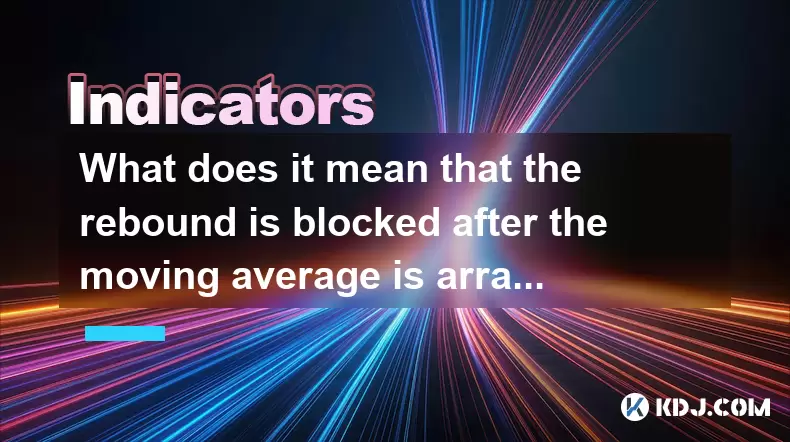
What does it mean that the rebound is blocked after the moving average is arranged in a short position for the first time?
Jul 26,2025 at 10:51am
Understanding the Short-Term Moving Average ConfigurationWhen traders refer to a 'short position arrangement' in moving averages, they are describing ...
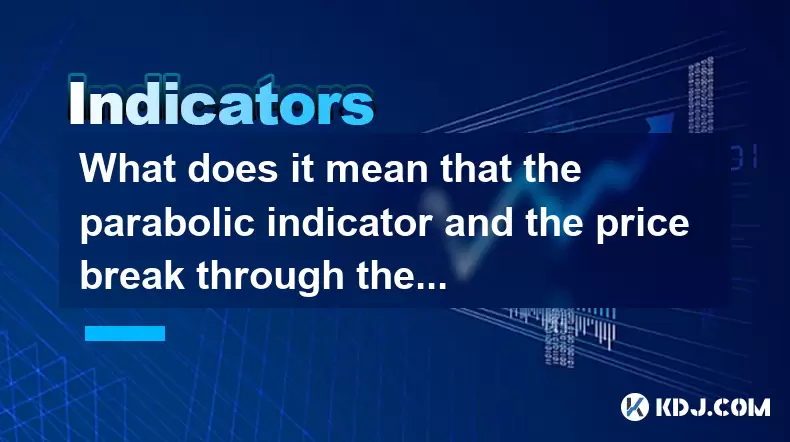
What does it mean that the parabolic indicator and the price break through the previous high at the same time?
Jul 26,2025 at 07:22pm
Understanding the Parabolic Indicator (SAR)The Parabolic SAR (Stop and Reverse) is a technical analysis tool developed by J. Welles Wilder to identify...
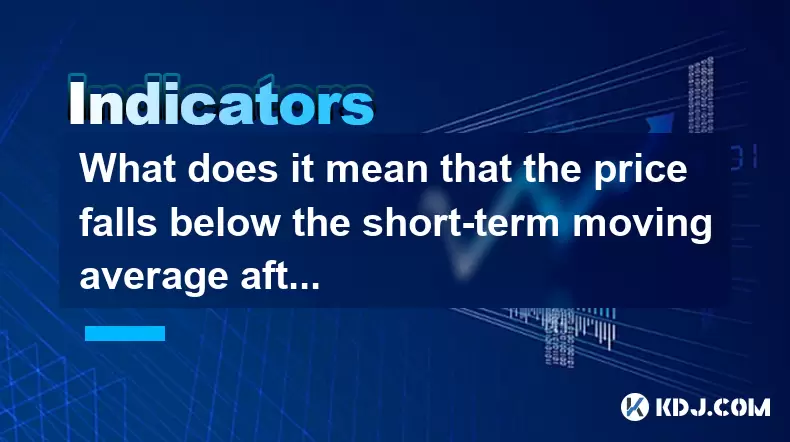
What does it mean that the price falls below the short-term moving average after the RSI top divergence?
Jul 26,2025 at 11:01pm
Understanding RSI Top Divergence in Cryptocurrency TradingThe Relative Strength Index (RSI) is a momentum oscillator widely used in cryptocurrency tra...
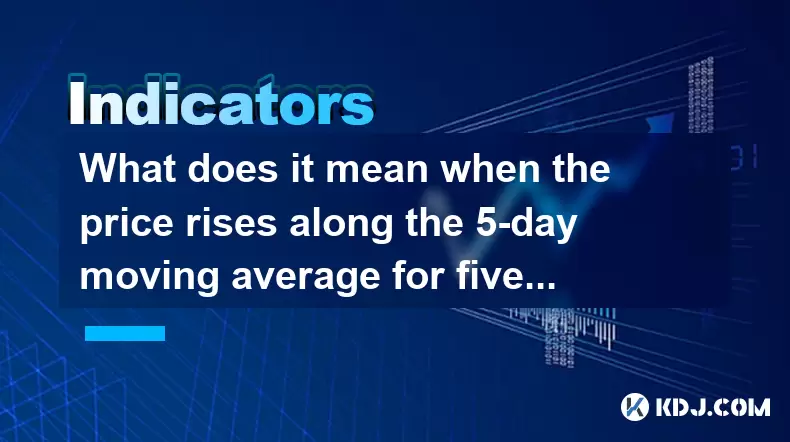
What does it mean when the price rises along the 5-day moving average for five consecutive days?
Jul 26,2025 at 08:07am
Understanding the 5-Day Moving Average in Cryptocurrency TradingThe 5-day moving average (5DMA) is a widely used technical indicator in cryptocurrency...
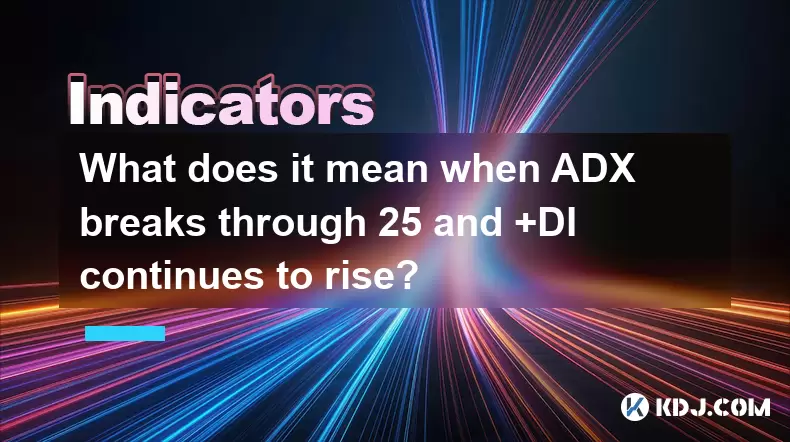
What does it mean when ADX breaks through 25 and +DI continues to rise?
Jul 26,2025 at 07:00pm
Understanding the ADX Indicator and Its ThresholdsThe Average Directional Index (ADX) is a technical analysis tool used to measure the strength of a t...
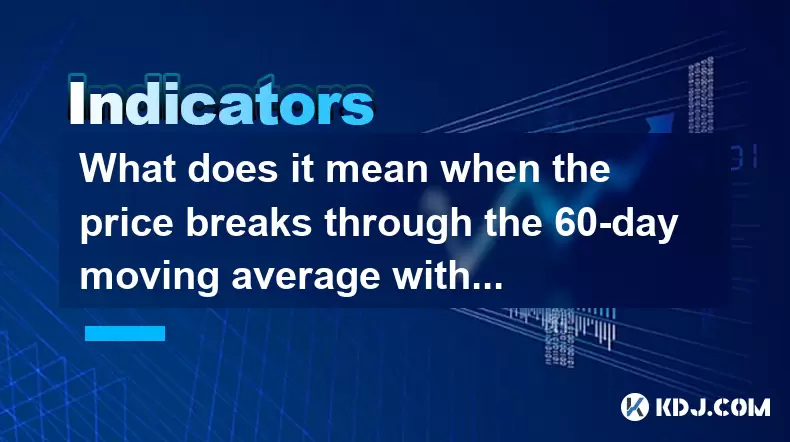
What does it mean when the price breaks through the 60-day moving average with a large volume but shrinks the next day?
Jul 26,2025 at 06:01am
Understanding the 60-Day Moving Average in Cryptocurrency TradingThe 60-day moving average (60DMA) is a widely used technical indicator in the cryptoc...

What does it mean that the rebound is blocked after the moving average is arranged in a short position for the first time?
Jul 26,2025 at 10:51am
Understanding the Short-Term Moving Average ConfigurationWhen traders refer to a 'short position arrangement' in moving averages, they are describing ...

What does it mean that the parabolic indicator and the price break through the previous high at the same time?
Jul 26,2025 at 07:22pm
Understanding the Parabolic Indicator (SAR)The Parabolic SAR (Stop and Reverse) is a technical analysis tool developed by J. Welles Wilder to identify...

What does it mean that the price falls below the short-term moving average after the RSI top divergence?
Jul 26,2025 at 11:01pm
Understanding RSI Top Divergence in Cryptocurrency TradingThe Relative Strength Index (RSI) is a momentum oscillator widely used in cryptocurrency tra...

What does it mean when the price rises along the 5-day moving average for five consecutive days?
Jul 26,2025 at 08:07am
Understanding the 5-Day Moving Average in Cryptocurrency TradingThe 5-day moving average (5DMA) is a widely used technical indicator in cryptocurrency...

What does it mean when ADX breaks through 25 and +DI continues to rise?
Jul 26,2025 at 07:00pm
Understanding the ADX Indicator and Its ThresholdsThe Average Directional Index (ADX) is a technical analysis tool used to measure the strength of a t...

What does it mean when the price breaks through the 60-day moving average with a large volume but shrinks the next day?
Jul 26,2025 at 06:01am
Understanding the 60-Day Moving Average in Cryptocurrency TradingThe 60-day moving average (60DMA) is a widely used technical indicator in the cryptoc...
See all articles

























































































